
by Leslie Moldenauer | | Essential Oils, Food
Are you walking around on a low simmer? The good news is, once we understand what causes inflammation and see how quickly our actions can either fan or cool the flames, we can begin to make better choices every day that bring us back into balance.
Inflammation found in the body is typically a normal and healthy response to injury or to defend against foreign invaders. When the inflammation is due to an injury, sometimes we can visually see it, and sometimes we can feel it when the skin is hot to the touch as well as experience the pain that comes along with it. This heat is the body’s way of getting more nourishment and more immune activity (WBC) into an area that needs to fend off infection or heal (1). But inflammation isn’t always helpful. In great amounts over a long period of time, it can be a real problem. Whole-body inflammation is a chronic, low-level inflammation. Evidence shows that over time this kind of systemic inflammation sets the stage for many serious diseases including but not limited to rheumatoid arthritis, fibromyalgia, stroke, several cancers, lupus, migraines, dementia, Chron’s disease, and heart disease (2).
Would you be surprised if I told you that most of this systemic inflammation starts in your gut? Intestinal bloating, frequent bouts of diarrhea or constipation, gas and pain, heartburn and acid reflux are early signs of an inflamed digestive tract. Keep in mind these are the early signs and they should not be ignored.
See, your gut is where more than 2/3rds of your immune system is; it was designed to eliminate viruses and bacteria in your food before they infect your body. If your gut is inflamed it can’t properly fight off virus and bacteria; leading to inflammation, malabsorption of nutrients, and what is coined leaky gut syndrome, or intestinal permeability. Rease more about this here (Source)
Why do so many of us have this type of inflammation? The modern diet has the majority of us eating an upside-down ratio of fatty acids (omega-3, -6, and -9), too much sugar and carbs, and high levels of wheat, dairy, and other common allergens.
Let’s pull this apart a little bit.
- Sugar-Sugar can seem almost impossible to avoid since it is in just about everything. Many products would surprise you. I recommend watching the documentary That Sugar Film (Free live streaming with Amazon Prime)..it is eye opening. High sugar products like sodas, fruit drinks, candies, pastries, etc. should be avoided. Even grains should be monitored as they turn to sugar and raise blood sugar levels in the body rather quickly. Some healthy substitutes for sugar include stevia (pure), honey, and blackstrap molasses. Keep in mind even these healthy alternative raise blood sugar levels, so moderation is key.
- Oils-Most polyunsaturated vegetable oils like safflower, sunflower, corn, peanut and soy, are high in linoleic acid, an omega-6 essential fatty acid that is actually PRO-inflammation. I recommend healthier fats such as coconut or ghee when cooking.
- Gluten/Refined Grains– For many of us, if not all of us, gluten is the wicking that lights a fire of inflammation in our body. Anyone suffering from celiac disease knows how inflammatory wheat can be. The kicker is that many more people likely suffer from an intolerance than true celiac disease. Many do not have the more common symptoms, which are gut symptoms like diarrhea, constipation, and bloating. Systemic simmering of inflammation can show itself in many other ways….or it can be somewhat silent. Have you ever heard the phrase: “Inflammation-The Silent Killer?” We know there is much controversy as to why wheat is such an issue. It is not my intention to try to convince you what I believe, but I will say I know a number of people who can eat bread and pasta in Italy with no issue, but come home to very different reactions to “America’s wheat”. Food for thought.
- Dairy– One of the most inflammatory foods, second only to gluten. It causes inflammation in a large percentage of the population, resulting in digestive issues such as bloating, gas, constipation, and diarrhea. You do not need to be lactose intolerant for dairy to cause inflammation in your body. Dairy that is raw or not heat pasteurized can be very different then conventional dairy in regards to is health benefits as well as reactions in the body. For these reasons, my family tries to stay away from conventional dairy as much as possible.
- Meat-Not all meats are created equal. Organic antibiotic free grass-fed meat is the only meat I recommend. Conventionally raised animals are fed GMO grains, pumped full of antibiotics and as a result, the meat is extremely high in the inflammation-promoting Omega 6, rather than the Omega 3 rich pasture raised counterpart. Do not be tricked by food labeling, look for 100% grass-fed and organic.
Another big cause of chronic inflammation in the body is…..CHRONIC UNRELENTING STRESS! When you are under chronic stress and cortisol is constantly flowing at high levels, your immune system lowers and you are more susceptible to illness and you guessed it—chronic inflammation. We all need to work to naturally decrease inflammation in the body and minimize stress.

I will not cover these in this particular article, but there are other causes of inflammation in the body such as: overuse of antibiotics, infection, and hormonal imbalances. Here is an article that goes into more detail about these areas.
So how do we decrease inflammation in the body?
1.Consume more olive oil, fish, and nuts. The Mediterranean-style diet based on fruits, vegetables, nuts, and olive oil (organic) can lower inflammation. The reason being is the high amount of omega-3 fats in these foods. Omega-3 fats bring the inflammation down- omega-6 raises it, fuels it. Read more here on the anti-inflammatory benefits of Omega 3’s (3).

Photo Credit: Everynutrient.com
2.Get active. Exercise a great way to lower inflammation without any side effects. Our bodies were meant to be active!
3.Get enough sleep. Some reports state to get a minimum of 7 hours of sleep a night. That is a good goal.
4.Reduce stress. High levels of stress hormones can lead to the release of excess inflammatory chemicals. Stress reduction is perhaps more important than any other thing I have mentioned, even above your diet. Essential oils can go a long way to assist in calmer moods, but working hard on handling what is important and leaving the rest behind is something to work towards every day.
Here is one of my favorite blends to help calm me. This amount of drops is suitable for a 400ml water reservoir diffuser, adjust accordingly:
Lavender Lavandula angustifolia 4 drops
Ylang ylang Cananga odorata 3 drops
Sweet Marjoram Origanum majorana 2 drops
Neroli Citrus aurantium 1 drop
Herbs to focus on. Incorporating turmeric, ginger, holy basil, cinnamon, cayenne, and garlic into your daily diet is important to combat inflammation. (As I do not know your medical history, make sure you do not have any contradictions to these herbs before consuming)
Remember, sometimes you may not have what is considered typical ‘symptoms’ of chronic inflammation. If you are a pain sufferer or are suffering any disease’ ending in ‘itis’, you need to address the inflammation in your body.
If you think you might have a food sensitivity, I recommend going on an elimination diet for two weeks to see how you feel. You may find that avoiding certain foods restores more than just your digestive health. Countering chronic inflammation takes a combination approach because it arises from a combination of causes. The great news is we have so much more control than we realize — if we understand how our choices affect our health, we can do something about it. Knowledge is power-to your health!
References
(1) Inflammation: Causes, Symptoms & Anti-Inflammatory Diet. Retrieved from https://www.livescience.com/52344-inflammation.html
(2) Chronic, Subtle, Systemic Inflammation. Retrieved from https://www.painscience.com/articles/inflammation-chronic-subtle-systemic.php
(3) Omega-3 Fatty Acids. Retrieved from https://www.umm.edu/health/medical/altmed/supplement/omega3-fatty-acids
Please note that I am not a medical practitioner. The content of this website is provided for general informational purposes only and is not intended as, nor should it be considered a substitute for, professional medical advice. Do not use the information on this website for diagnosing or treating any medical or health condition. If you have or suspect you have a medical problem, promptly contact your professional healthcare provider. By using this website, you assume full responsibility and liability for your own actions.
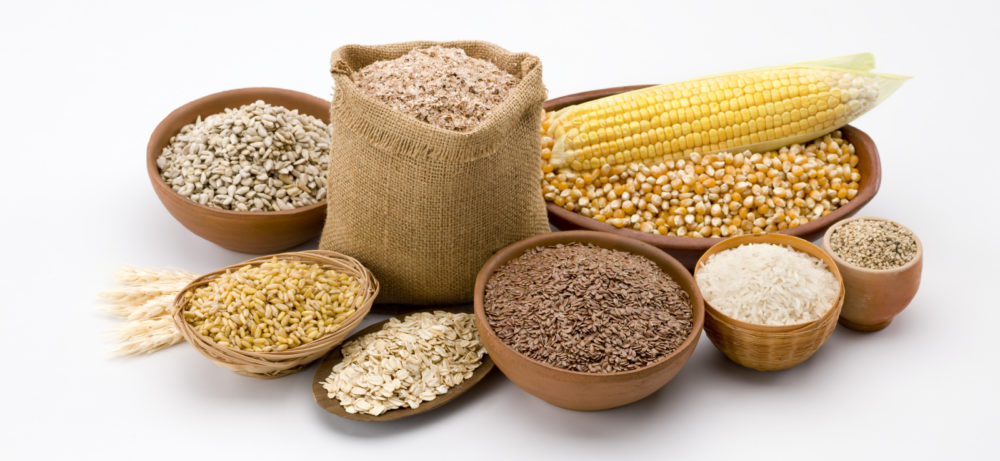
by Leslie Moldenauer | | Food
Grains are a major staple of most people’s diet in America. The Food Pyramid recommends 6-11 servings of grains a day! While processed grains and white flours have gotten a bad rap in the last few years, most people still believe that whole grains are a healthy and necessary part of their diet. It comes as a shock to many people that the human body is not designed to function optimally on grains and flours.
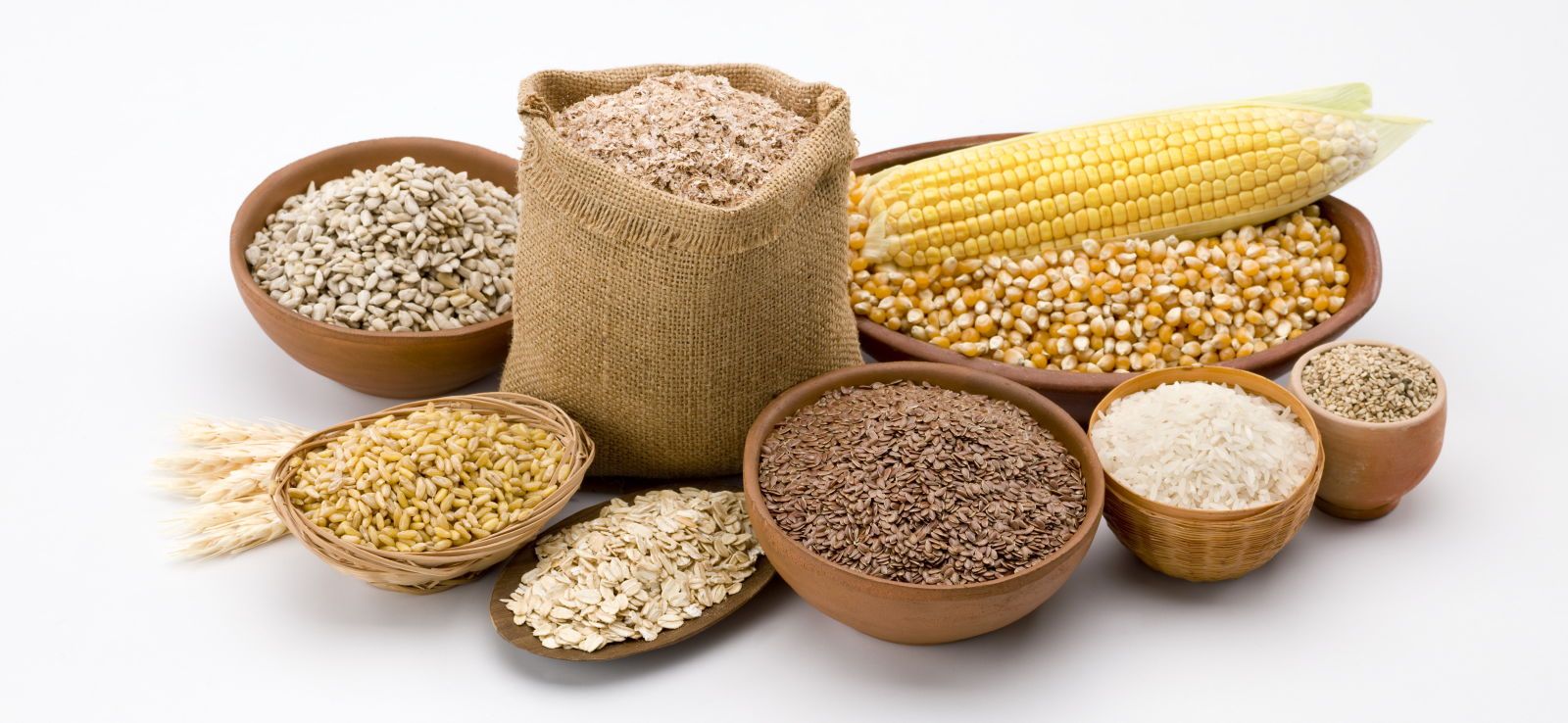
Think about your own intake of grain products. In a month’s time, most people will have eaten several slices of bread, several bowls of cereal with milk, pasta, rice, bagels, rolls, muffins, crackers, cookies, pastries, corn or other forms of chips, and tortillas. Most of these are refined and lack many important nutrients. Grains contain undetectable amounts of vitamin C, B12, carotenoids, and other vitamins and minerals, and they tend to displace foods rich in these substances that are associated with a decreased risk of heart disease and many forms of common cancers. Grains may actually inhibit the metabolism of these nutrients and cause autoimmune reactions. Not only are grains deficient in vitamins but many contain substances that decrease the intestinal absorption of many other important nutrients such as calcium, magnesium, iron, copper and zinc. One example of malabsorption…are you anemic?? Wheat/gluten impairs your absorption or iron. If you are taking iron, pairing it with Vitamin C the way you should and it is not working…look to wheat.
Appropriately termed “white death,” the common American diet consists of a combination of: white flour, white rice, white sugar, potatoes, and processed white foods. This high grain/processed food diet leads to an increase in insulin sensitivity or resistance, diabetes, and obesity. Many of the processed foods and grain based products on the market are absorbed almost identically to straight table sugar, causing a myriad of problems including:
- fatigue
- depression
- weight gain
- joint pain
- bloating
- diabetes
- vision problems
- hair loss
- and autoimmune disease
So by now you might be thinking, I must be on the gluten free bandwagon. As a matter of fact I am, but not for the “weight loss” fad that it has been identified with. (although if you stop eating it you are likely to lose weight) I stopped eating gluten when my joints were under constant assault I could not write more than 5 minutes without having to stop and massage my hands. My hips ached and I had constant sinus pressure. When I finally took the plunge it took 7 days…that is all, 7 days and ALL my symptoms were gone. So let’s look a little bit more at wheat and gluten.
How Wheat (and Gluten) Triggers Weight Gain, Pre-diabetes, Diabetes and More
This new modern wheat may look like wheat, but it is different in three important ways that all drive obesity, diabetes, heart disease, cancer, dementia and more.
It contains a Super Starch – amylopectin A that is super fattening.
It contains a form of Super Gluten that is super-inflammatory.
It contains forms of a Super Drug that is super-addictive and makes you crave and eat more.
Today’s wheat, the product of genetic manipulation and hybridization that created short, stubby, hardy, high yielding wheat plants with much higher amounts of starch and gluten, is not your grandmothers wheat. The man who engineered this modern wheat won the Nobel Prize – it promised to feed millions of starving people around the world. Well, it has, and it has made them fat and sick.
Fact-Two slices of whole wheat bread now raise your blood sugar more than two tablespoons of table sugar!!!
Do you pay attention to labels? How about that ever popular box of cereal that states “heart healthy”? The best way to avoid foods that are bad for you is to stay away from foods with health claims like this and others on the label. The claims could not be farther from the truth. Better yet, try your best to not eat from a box at all.
Not only does wheat contain super starch and super gluten – making it super fattening and super inflammatory, but it also contains a super drug that makes you crazy, hungry and addicted. Even if you do not have the classic gut issues when eating gluten, don’t be fooled…inflammation is happening to you too. Inflammation is a silent killer.
If you have digestive problems or suffer some of the classic autoimmune reactions (e.g. allergies) consider the possibilities that grains may be problematic for you.
I realize that you like grains, probably a lot, and that your doctor probably even encourages you to eat them. I understand that the idea of giving them up might sound downright crazy, even impossible. I also know that giving up the grains is one of THE best things you can do for your health.
Please note that I am not a medical practitioner. The content of this website is provided for general informational purposes only and is not intended as, nor should it be considered a substitute for, professional medical advice. Do not use the information on this website for diagnosing or treating any medical or health condition. If you have or suspect you have a medical problem, promptly contact your professional healthcare provider. By using this website, you assume full responsibility and liability for your own actions.

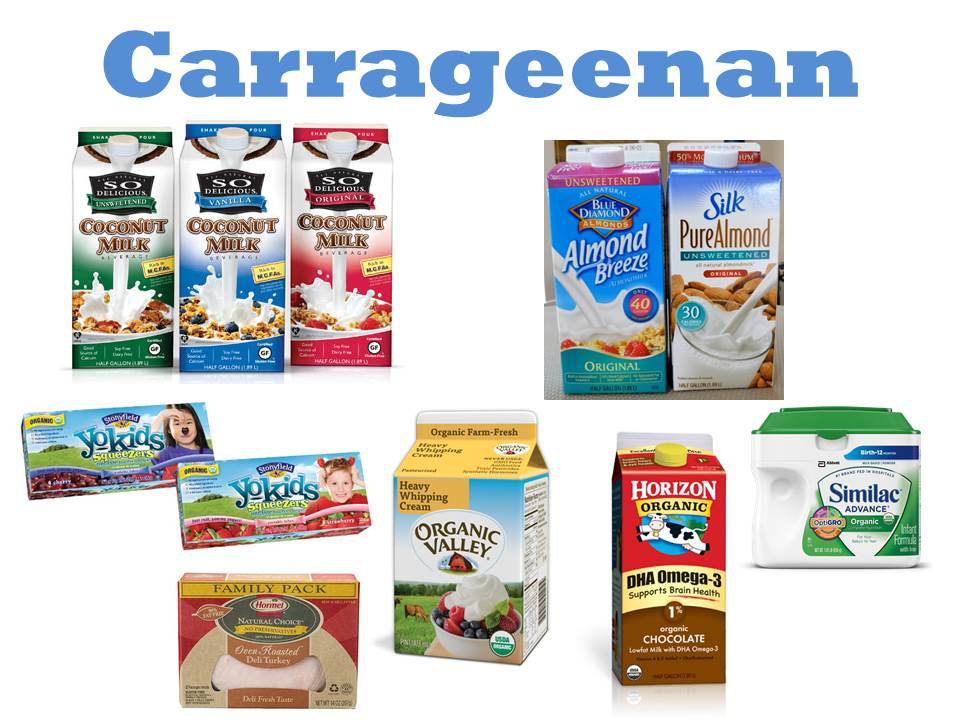
by Leslie Moldenauer | | Food

Lots of foods can contain some pretty weird-sounding stuff. That’s because processed foods have some unnatural things they have to do. For example, a cookie might get made in Texas, trucked across the country in the middle of the summer, sit in a warehouse for a couple of weeks before it is sold and then ride home in the trunk of your car. And when you open the package, you expect the cookie to look perfect. Not an easy thing to accomplish, it turns out.
What exactly is Carrageenan?
“Carrageenans or carrageenins are a family of linear sulfated polysaccharides that are extracted from red edible seaweeds. They are widely used in the food industry, for their gelling, thickening, and stabilizing properties.” (Google)
It is important to note that Carrageenan is not digestible and has NO nutritional value. It is often used because it thickens and emulsifies products and it is often found even in organic and “natural” products. Carrageenan is even fund in organic items like: coconut milk, almond milk , yogurt, and sad to say even infant formula.
“Although derived from a natural source, carrageenan appears to be particularly destructive to the digestive system, triggering an immune response similar to that your body has when invaded by pathogens like Salmonella. The result: “Carrageenan predictably causes inflammation, which can lead to ulcerations and bleeding,” explains veteran carrageenan researcher Joanne Tobacman, MD, associate professor of clinical medicine at the University of Illinois School of Medicine at Chicago (one of the leading researchers in the field of digestive health) shed some light on carrageenan:
The food ingredient irritates by activating an immune response that dials up inflammation. Her previous work showed a concerning connection between carrageenan and gastrointestinal cancer in lab animals, and she’s involved with ongoing research funded through the National Institutes of Health that is investigating carrageenan’s effect on ulcerative colitis and other diseases like diabetes.
“Dr. Tobacman said that her research has shown that exposure to carrageenan causes inflammation and that when we consume processed foods containing it, we ingest enough to cause inflammation in our bodies. She explained that all forms of carrageenan are capable of causing inflammation. This is bad news. We know that chronic inflammation is a root cause of many serious diseases including heart disease, Alzheimer’s and Parkinson’s diseases, and cancer.
Dr. Tobacman also told the board that in the past, drug investigators actually used carrageenan to cause inflammation in tissues in order to test the anti-inflammatory properties of new drugs. And she reported further that when laboratory mice are exposed to low concentrations of carrageenan for 18 days, they develop “profound” glucose intolerance and impaired insulin action, both of which can lead to diabetes.”
More information can be found here on this interview.
One thing I know for sure, inflammation is a precursor to many forms of dis”ease”, so I work very hard to minimize any inflammation in my body; and you should in yours too!
Here is a great resource for you in regards to where carrageenan is hiding.
Please note that I am not a medical practitioner. The content of this website is provided for general informational purposes only and is not intended as, nor should it be considered a substitute for, professional medical advice. Do not use the information on this website for diagnosing or treating any medical or health condition. If you have or suspect you have a medical problem, promptly contact your professional healthcare provider. By using this website, you assume full responsibility and liability for your own actions.

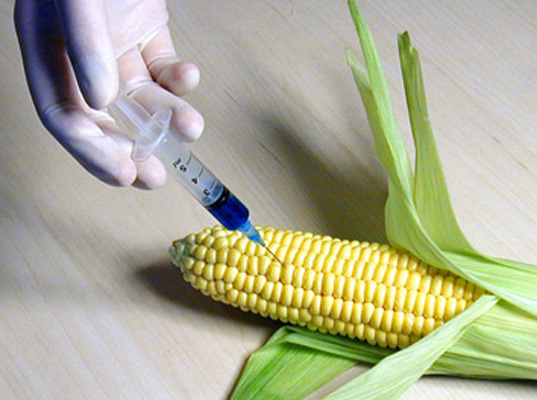
by Leslie Moldenauer | | Food
GMOs, or “genetically modified organisms,” are plants or animals…(yes you read that right animals too!!!) created through the gene splicing techniques of biotechnology (also called genetic engineering, or GE). This experimental technology merges DNA from different species, creating unstable combinations of plant, animal, bacterial and viral genes that cannot occur in nature or in traditional crossbreeding.
It can be difficult to stay up-to-date on food ingredients that are at-risk of being genetically modified, as the list of at-risk agricultural ingredients is frequently changing. So what foods are being modified right now?
- Alfalfa (first planting 2011)
- Canola (approx. 90% of U.S. crop)
- Corn (approx. 88% of U.S. crop in 2011)
- Cotton (approx. 90% of U.S. crop in 2011)
- Papaya (most of Hawaiian crop; approximately 988 acres)
- Soy (approx. 94% of U.S. crop in 2011)
- Sugar Beets (approx. 95% of U.S. crop in 2010)
- Zucchini and Yellow Summer Squash (approx. 25,000 acres) (1)
What is the purpose of gene splicing?
1-Plants are supposed to be able to tolerate drought conditions better.
2-Crop losses from insects pests can be staggering, resulting in devastating loss for farmers. More and more consumers are concerned about buying foods free of pesticides. The design is for the bugs stomach to in essence explode if they ingested a part of a plant that has been GM. (Does this sound healthy for us to ingest???) So now MORE pesticides are being sprayed MORE often, see more on that below.
3-Herbicide tolerance. For some crops, it is not cost-effective to remove weeds by physical means such as tilling, so farmers will often spray large quantities of different herbicides (weed-killer) to destroy weeds, a time-consuming and expensive process. Crop plants genetically-engineered to be resistant to herbicides. For example, Monsanto has created a strain of soybeans genetically modified to be not affected by their herbicide product Roundup. Did I mention that Monsanto, the same company that created Roundup also created Saccharine, Aspartame, PCB’s, DDT, Agent Orange, Bovine Growth Hormone and Glyphosate (Roundup), all which have been linked to cancer and other health problems? Do we want a company like this to have a hand in the growth of our food and the health of our family?
More on Roundup—15 years of research by the USDA indicated that glyphosate, the key ingredient in Roundup herbicide, is linked to fungal disease in plants—not the absence of disease in plants. Glyphosate is no longer effective at killing weeds, as there is resistance-they are now called “super weeds”. According to USGS (U.S. Geological Survey Office), more than 88,000 tons of glyphosate was used in the US in 2007, up from only 11,000 tons in 1992. Since the advent of these so called “super weeds”, the use of glyphosate has risen significantly. Does it sound like Monsanto’s theory is working? Glyphosate residues are also found in our food: a recent study by Biosemioic Entropy found glyphosate residues in the main foods of the western diet-sugar, wheat, and GMO corn and soy. The residue is also found in 75% of our rainwater and air! These residues inhibit critical enzymes in mammals (which manifests slowly over time), as inflammation damages cellular systems throughout the body. (2)
Glyphosate causes birth defects and tumors in animals, and sharp decline in beneficial insects including monarch butterflies and bees. The birth defects were found in chicken and frog embryo’s. Glyphosate caused endocrine disruption, damage to DNA, reproductive and developmental toxicity, neurotoxicity, and cancer, as well as birth defects at low levels. (3) I am not happy with low levels….I want NO LEVELS of glyphosate in my food.
OK, so now you know some facts about what was supposed to happen with the advent of gene splicing…as well as it is just not working as they anticipated; at the risk of my health, your health and the health of your family….your children! There have not been significant LONG TERM studies to see how they will affect our health in the long term. In my opinion and the opinion of many; Monsanto is concerned about the Benjamins….nothing more, nothing less. I do not want my family or yours to be the next science experiment. Think about that for a minute before reading on……………………………………..
Most developed nations do not consider GMOs to be safe. In more than 60 countries around the world, including Australia, Japan, and all of the countries in the European Union, there are significant restrictions or outright bans on the production and sale of GMOs. In the U.S., the government has approved GMOs based on studies conducted by the same corporations that created them and profit from their sale. See the startling image below showing you how the FDA and Monsanto team up together.
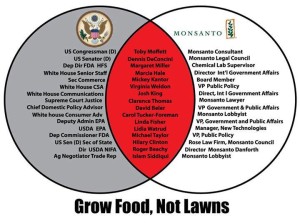
click image to enlarge
Unfortunately, even though polls consistently show that a significant majority of Americans want to know if the food they’re purchasing contains GMOs, the powerful biotech lobby has succeeded in keeping this information from the public. Americans are standing up and taking matters into their own hands and choosing to opt out of the GMO experiment. In the absence of mandatory labeling, the Non-GMO Project was created to give consumers the informed CHOICE THEY DESERVE.
The Non-GMO Project is a non-profit organization with a mission of protecting the non-GMO food supply and giving consumers an informed choice. We offer North America’s ONLY third party verification for products produced according to rigorous best practices for GMO avoidance. Their strategy is to empower consumers to make change through the marketplace. If people stop buying GMOs, companies will stop using them and farmers will stop growing them. See the Non-GMO site here. There are companies out there that are proud to be Non-GMO verified. Click here for a list of participating companies. Look for this image on your food.
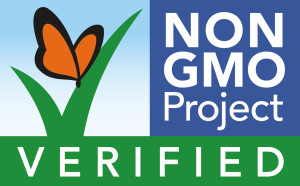
This is the 2nd year that my family has participated in march Against Monsanto where nearly 2 million people in 50 countries worldwide attended to try to bring awareness to people about who Monsanto is and what GMO’s are and how they negatively affect our planet, our wildlife, and our health. Here is a great article about the day http://www.march-against-monsanto.com/2014/05/press-release.html
Here is a short video of the March that I participated in. I spoke in the 6 minute mark and my boys participated as well.
You do have a choice of what you put into your body, what you can do is vote with your grocery store dollar and support the organic farmer’s and buy the Non-GMO verified products. Shop your local farmer’s market…show Monsanto that we do not want their frankenfood!
References
(1) http://www.nongmoproject.org/learn-more/what-is-gmo/
(2) http://www.mdpi.com/1099-4300/15/4/1416
(3) http://www.scribd.com/doc/57277946/RoundupandBirthDefectsv5
Additional Resources
http://www.dailyunconstitutional.com/2207-sobering-facts-about-roundup-glyphosate-and-how-the-epa-ignores-its-dangers/
http://onlinelibrary.wiley.com/doi/10.1111/j.1752-4598.2011.00142.x/abstract
http://www.reuters.com/article/2011/08/31/us-glyphosate-pollution-idUSTRE77U61720110831
http://www.march-against-monsanto.com/2014/05/press-release.html
http://articles.mercola.com/sites/articles/archive/2013/08/06/genetic-modification.aspx
http://foodrevolution.org/blog/former-pro-gmo-scientist/
http://www.ncbi.nlm.nih.gov/pubmed/18989835
http://www.ncbi.nlm.nih.gov/pubmed/23756170
Please note that I am not a medical practitioner. The content of this website is provided for general informational purposes only and is not intended as, nor should it be considered a substitute for, professional medical advice. Do not use the information on this website for diagnosing or treating any medical or health condition. If you have or suspect you have a medical problem, promptly contact your professional healthcare provider. By using this website, you assume full responsibility and liability for your own actions.

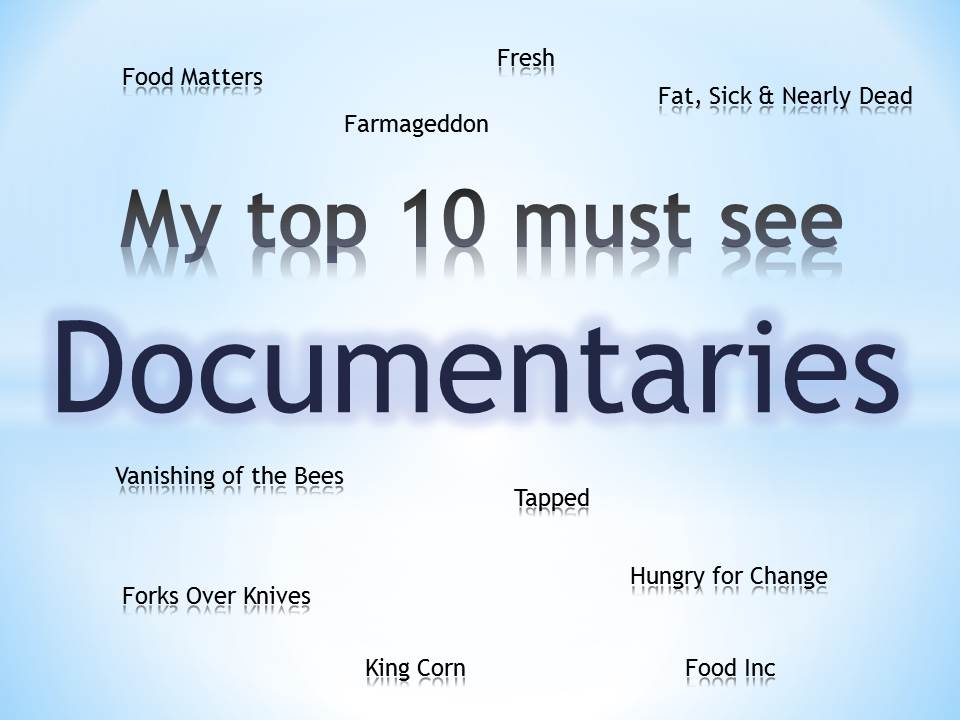
by Leslie Moldenauer | | Food
I wanted to share with you my top 10 favorite documentaries, all related to food in one way or another. This was an extremely hard task….to pick only 10 that is. Watching these documentaries with my spouse has forever changed the way we look at food, health and “the system” that is severely corrupt; focusing on money over health, no matter the cost. WE have a choice, WE can vote with our dollar, WE can be the change.
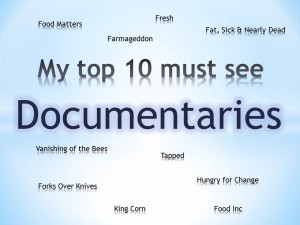
Here is my top 10:
Farmageddon
Americans’ right to access fresh, healthy foods of their choice is under attack. Farmageddon tells the story of small, family farms that were providing safe, healthy foods to their communities and were forced to stop, sometimes through violent action, by agents of misguided government bureaucracies, and seeks to figure out why.
Evoking both sympathy and anger for those farmers violently shut down by overzealous government policy and regulators, Farmageddon stresses the urgency of food freedom. Though the film deals with intense scenes and dramatic situations, the overall tone is optimistic, encouraging farmers and consumers alike to take action to preserve individuals’ rights to access food of their choice and farmers’ rights to produce these foods.
Watch for free here Available on Netflix
Fat, Sick & Nearly Dead
A documentary seen by over 8 million people worldwide, Joe was 100 pounds overweight, loaded up on steroids and suffering from a debilitating autoimmune disease. FAT, SICK & NEARLY DEAD is an inspiring film that chronicles Joe’s personal mission to regain his health.
With doctors and conventional medicines unable to help long- term, Joe turns to the only option left, the body’s ability to heal itself. He trades in the junk food and hits the road with juicer and generator in tow, vowing only to drink fresh fruit and vegetable juice for the next 60 days. Across 3,000 miles Joe has one goal in mind: To get off his pills and achieve a balanced lifestyle.
What emerges is nothing short of amazing – an inspiring tale of healing and human connection.
Watch for free here
Food Inc.
In Food, Inc., filmmaker Robert Kenner lifts the veil on our nation’s food industry, exposing the highly mechanized underbelly that has been hidden from the American consumer with the consent of our government’s regulatory agencies, USDA and FDA. Our nation’s food supply is now controlled by a handful of corporations that often put profit ahead of consumer health, the livelihood of the American farmer, the safety of workers and our own environment. We have bigger-breasted chickens, the perfect pork chop, herbicide-resistant soybean seeds, even tomatoes that won’t go bad, but we also have new strains of E. coli—the harmful bacteria that causes illness for an estimated 73,000 Americans annually. We are riddled with widespread obesity, particularly among children, and an epidemic level of diabetes among adults.
This was the very first documentary that I watched over 7 years ago, and still the one that has had the most impact in the changes I have made in my life to this day.
Watch for free here
Food Matters
In this 90-minute research-backed, stunning documentary DVD you’ll discover:
- Why all the so-called ‘cures’ for everyday health issues aren’t working, regardless of the billions spent in research and development.
- The true cause of disease and how to treat it — what works, what doesn’t, and what’s killing you.
- How to use the right kinds of foods and supplements to help treat chronic and serious illnesses — even deadly cancer.
- Why even lightly steaming your food can be detrimental to your health and what to do instead.
- How to disease-proof your body and enjoy optimum health and longevity.
- Natural and effective remedies for treating mental illness — including depression.
- How to use raw foods and detoxification for rapid and permanent weight loss.
- How to actually reverse heart disease without drugs and surgery –Dr. Mercola
Watch here for free Available on Netflix
Forks Over Knives
Forks Over Knives examines the profound claim that most, if not all, of the degenerative diseases that afflict us can be controlled, or even reversed, by rejecting our present menu of animal-based and processed foods. The major storyline in the film traces the personal journeys of a pair of pioneering yet under-appreciated researchers, Dr. T. Colin Campbell and Dr. Caldwell Esselstyn.
The idea of food as medicine is put to the test. Throughout the film, cameras follow “reality patients” who have chronic conditions from heart disease to diabetes. Doctors teach these patients how to adopt a whole-foods plant-based diet as the primary approach to treat their ailments—while the challenges and triumphs of their journeys are revealed.
Watch here for free
Fresh
This film is really a celebration of farmers, thinkers and businesses striving to re-invent America’s food system. Among the people profiled are urban farmer and activist, Will Allen, the recipient of MacArthur’s 2008 Genius Award, and farmer Joel Salatin.
Unable to locate a free version but it is available on Netflix
Hungry for Change
HUNGRY FOR CHANGE exposes shocking secrets the diet, weight loss and food industry don’t want you to know about; deceptive strategies designed to keep you coming back for more. Find out what’s keeping you from having the body and health you deserve and how to escape the diet trap forever.
Watch here for free
King Corn
When two college friends move to Iowa to grow an acre of corn, they discover just how big a role corn plays in American life. They discover how corn winds up in just about every processed food that is on the supermarket shelves. They also hit on big issues like government subsidies and public health.
Watch here for free Available on Netflix
Tapped
Tapped looks into the bottled water industry and its long term effects socially, economically and ecologically. The filmmakers focused on industry giants such as PepsiCo and Nestlé Waters, visiting a town that Nestlé contains a factory in as well as running tests on the bottles the company uses for its products. Their results came back showing “several potentially harmful chemicals, some known carcinogens”.The documentary also focused on the amount of bottles that are recycled, noting that “Forty percent of bottled water is really just filtered tap water, and every day we throw away 30 million single-served bottles of water.”
Watch here for free Available on Netflix
Vanishing of the Bees
Honeybees have been mysteriously disappearing across the planet, literally vanishing from their hives.
Known as Colony Collapse Disorder, this phenomenon has brought beekeepers to crisis in an industry responsible for producing apples, broccoli, watermelon, onions, cherries and a hundred other fruits and vegetables. Commercial honeybee operations pollinate crops that make up one out of every three bites of food on our tables.
Filming across the US, in Europe, Australia and Asia, this documentary examines the alarming disappearance of honeybees and the greater meaning it holds about the relationship between mankind and mother earth.
Watch here for free Available on Netflix
I would love to hear your thoughts on any or all of these documentaries. If you have any others to suggest I would love to hear them. In my eyes, knowledge is power.
Support your local farmer!
Please note that I am not a medical practitioner. The content of this website is provided for general informational purposes only and is not intended as, nor should it be considered a substitute for, professional medical advice. Do not use the information on this website for diagnosing or treating any medical or health condition. If you have or suspect you have a medical problem, promptly contact your professional healthcare provider. By using this website, you assume full responsibility and liability for your own actions.

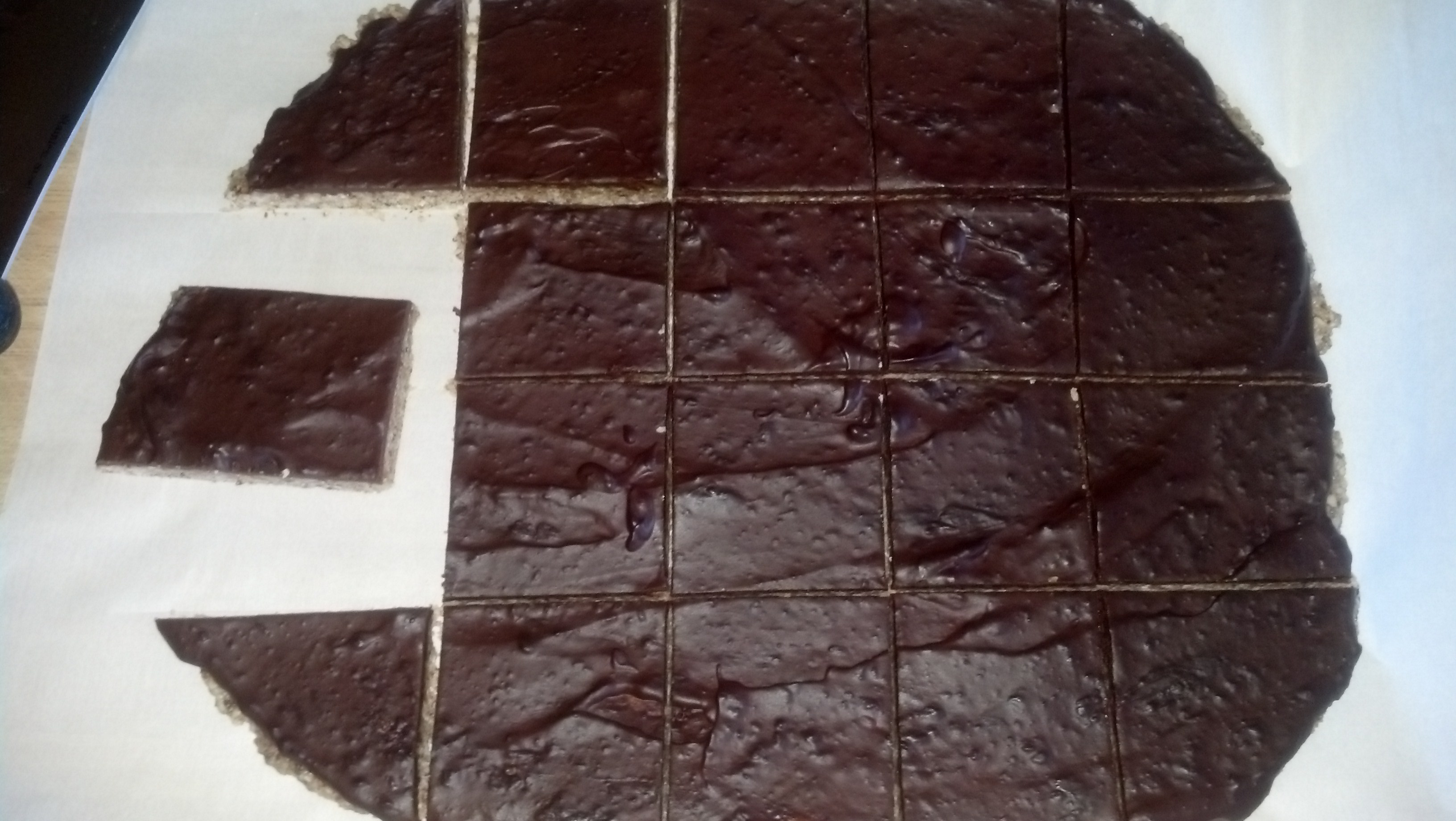
by Leslie Moldenauer | | Food, Recipes
I have slowly been working at getting more raw food into my family’s diet. These are a BIG hit. I have made them numerous times since and they do not last long. My two little boys beg for more, your family will too! Full of healthy fats and plenty of protein, once you see the power punch that bad boys carry, you will not mind letting them indulge!
Here is the skinny:
2 cups almonds
1/4 – 1/2 cup chia seeds
1/2 cup dried prunes, dates or raisins (I prefer dates)
1/2 cup shredded coconut (unsweetened)
1/2 cup almond butter (room temperature)
1/2 teaspoon sea salt
1/2 cup coconut oil (melted)
1/4 cup honey (raw to add enzymes)
2-3 teaspoons vanilla extract
1/4 bag of dark chocolate chips in a small saucepan for the topping, (I use Sunspire organic 65% cacao chocolate chips and mix with a little bit of coconut milk to make it creamy)
First, place the top five ingredients in the processor (almonds, chia, dried fruit, shredded coconut, and nut butter). Pulse for 10-20 seconds. Let sit.
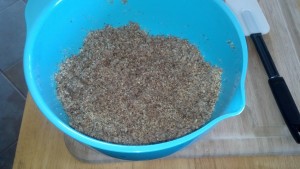
In a saucepan, melt coconut oil over very low heat (it melts at 76°-77° so it may already be melted). Stir sea salt, raw honey, and vanilla into the liquid coconut oil.
Add the coconut oil mixture into the food processor and blend until the ingredients all form a thick ball. (You can also take the top 5 ingredients to a bowl and add the liquid mixture to it and mix by hand) Cover a 9 1/2″ x 13″ cookie sheet in parchment paper and spread out this thick paste into a thin rectangular layer on the cookie sheet, over the paper. Place it into the freezer for 30 minutes.
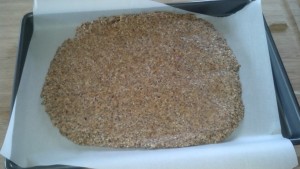
In a small saucepan, melt chocolate over very low heat, stirring continuously. Smooth melted chocolate thinly over the base; return to refrigerator for 30 minutes, until chocolate hardens.
Remove from refrigerator, cut into bars, and serve cold. Makes about 12-15 bars. Store in refrigerator or freeze to enjoy later!

Recipe adapted from http://countrylife.lehmans.com



















